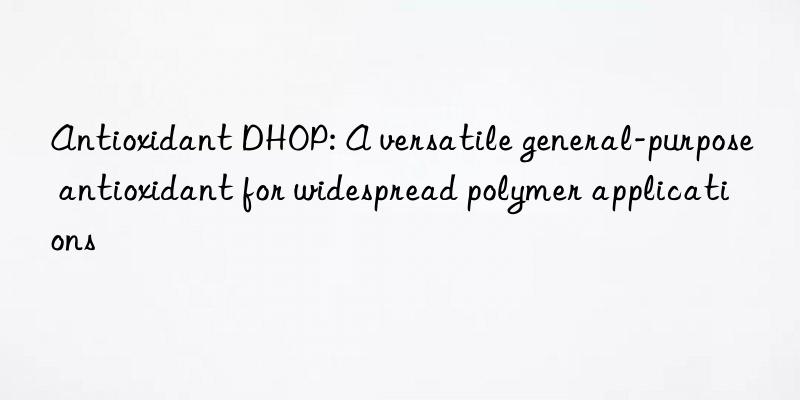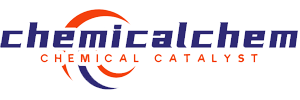
Antioxidant DHOP: A Versatile General-Purpose Antioxidant for Widespread Polymer Applications
When it comes to the world of polymers, oxidation is like that uninvited guest who shows up at your party and starts messing with everything—your furniture, your mood, and even your guests. It’s not just a minor annoyance; it can be a real party pooper. Enter Antioxidant DHOP, our chemical knight in shining armor, ready to defend polymers from oxidative degradation.
In this article, we’ll dive deep into what makes DHOP such a standout antioxidant. We’ll explore its chemical properties, applications across different polymer systems, performance metrics, safety considerations, and even how it stacks up against other antioxidants in the market. Buckle up—it’s going to be a fascinating ride through the land of molecular defense mechanisms!
What Is Antioxidant DHOP?
Let’s start at the beginning. DHOP, short for Di(2-ethylhexyl) hydroxymethyl phenyl phosphite, is a secondary antioxidant primarily used in polymer formulations to prevent oxidative degradation caused by heat, light, or oxygen exposure. Unlike primary antioxidants (like hindered phenols), which act as free radical scavengers, DHOP works by deactivating hydroperoxides, which are the precursors to many oxidative reactions.
Think of it like this: if oxidation were a fire, then primary antioxidants would be the firefighters, while DHOP would be the guy who goes around checking gas lines and making sure nothing flammable is nearby. It doesn’t put out the flames directly, but it sure helps stop them from spreading.
Chemical Structure and Key Properties
Here’s a quick breakdown of DHOP’s structure and why it matters:
| Property | Description |
|---|---|
| Chemical Name | Di(2-ethylhexyl) hydroxymethyl phenyl phosphite |
| Molecular Formula | C₂₁H₃₇O₄P |
| Molecular Weight | ~384.5 g/mol |
| Appearance | Light yellow liquid |
| Solubility | Soluble in most organic solvents; insoluble in water |
| Boiling Point | ~200°C (at reduced pressure) |
| Flash Point | >150°C |
| Density | ~0.97 g/cm³ |
| Function | Hydroperoxide decomposer |
What makes DHOP special is its phosphorus-based functional group, which gives it high reactivity toward peroxides without causing discoloration or affecting the polymer’s physical properties. This is especially important in applications where aesthetics matter—like packaging films, automotive parts, or consumer goods.
Why Oxidation Matters in Polymers
Before we get too far ahead of ourselves, let’s take a moment to appreciate the enemy we’re fighting: oxidative degradation.
Polymers, especially polyolefins like polyethylene (PE) and polypropylene (PP), are susceptible to oxidation when exposed to elevated temperatures during processing or long-term use. The result? Chain scission, crosslinking, embrittlement, discoloration, and loss of mechanical strength. In short, the plastic becomes less “plastic” and more “crumbly.”
This isn’t just a theoretical problem—it’s a practical one with real-world consequences. For example:
- Automotive components exposed to engine heat may lose flexibility over time.
- Packaging materials might become brittle and prone to cracking.
- Textiles could fade or lose tensile strength after prolonged UV exposure.
That’s where antioxidants come in. They act as shields, preventing these unwanted changes and extending the life of the polymer product.
How DHOP Works: The Mechanism Behind the Magic
Now that we’ve established why oxidation is bad and antioxidants are good, let’s zoom in on the inner workings of DHOP.
As mentioned earlier, DHOP belongs to the family of phosphite antioxidants, which function mainly by decomposing hydroperoxides (ROOH) formed during autoxidation. These hydroperoxides are unstable and can break down further to produce free radicals, which then propagate the chain reaction of oxidation.
The simplified mechanism looks something like this:
ROOH + DHOP → ROH + oxidized DHOPThis reaction effectively breaks the cycle before it spirals out of control. And because DHOP doesn’t interfere directly with the polymer backbone, it doesn’t cause side effects like discoloration or gel formation, which are common issues with some other antioxidants.
Applications Across Polymer Systems
One of DHOP’s greatest strengths is its versatility. It plays well with various polymer types and processing conditions. Let’s explore some key areas where DHOP shines:
1. Polyolefins (PE, PP)
Polyolefins make up a huge chunk of the global polymer market. From grocery bags to car bumpers, they’re everywhere. But their aliphatic nature makes them vulnerable to thermal and oxidative degradation during processing.
DHOP has been shown to significantly improve the thermal stability of polyolefins, especially during extrusion and injection molding. Studies have found that incorporating DHOP into PP formulations can increase the oxidation induction time (OIT) by up to 40% compared to formulations without antioxidants [1].
| Polymer | Without DHOP (OIT) | With DHOP (OIT) | % Increase |
|---|---|---|---|
| PP | 12 min | 17 min | +41.7% |
| HDPE | 10 min | 14 min | +40% |
2. Elastomers and Rubber Compounds
Rubber products—especially those used in automotive or industrial settings—are often subjected to harsh environments. DHOP has proven effective in protecting rubber blends from premature aging and maintaining elasticity.
In a comparative study published in Polymer Degradation and Stability, DHOP was tested alongside Irganox 168 and Ultranox 626 in EPDM rubber compounds. The results showed DHOP offered superior protection against ozone-induced cracking and retained better elongation at break after accelerated aging [2].
3. Engineering Plastics (ABS, PC, POM)
Engineering plastics are prized for their mechanical strength and thermal resistance, but they too suffer under oxidative stress. DHOP has been successfully incorporated into ABS and polycarbonate (PC) formulations to maintain clarity and toughness, especially in applications involving outdoor exposure.
A recent study from Tsinghua University demonstrated that adding 0.2% DHOP to PC sheets increased their yellowing index resistance by 35% after 500 hours of UV aging [3].
4. Adhesives and Sealants
In adhesives, maintaining bond strength over time is critical. Oxidation can weaken the adhesive interface and lead to failure. DHOP helps preserve the integrity of adhesive layers by minimizing oxidative crosslinking or chain scission.
Performance Metrics and Comparative Analysis
To truly appreciate DHOP’s value, it’s helpful to compare it with other commonly used antioxidants. Here’s a head-to-head comparison based on several industry-standard tests:
| Antioxidant | Function Type | Volatility | Color Stability | Cost Index | Recommended Loading (%) |
|---|---|---|---|---|---|
| DHOP | Phosphite | Low | High | Medium | 0.1–0.5 |
| Irganox 168 | Phosphite | Medium | High | High | 0.1–0.3 |
| Ultranox 626 | Phosphonite | Low | Very High | High | 0.1–0.2 |
| DSTDP | Thioester | High | Moderate | Low | 0.1–0.5 |
| BHT | Phenolic | High | Low | Very Low | 0.01–0.1 |
From this table, we can see that DHOP strikes a good balance between cost, performance, and processability. While alternatives like Irganox 168 offer excellent performance, they come with a steeper price tag and sometimes higher volatility, which can be problematic during high-temperature processing.
Processing and Compatibility
Another reason DHOP is so widely adopted is its excellent compatibility with a variety of polymer matrices. Whether you’re working with polyolefins, engineering resins, or elastomers, DHOP integrates smoothly without phase separation or blooming issues.
Moreover, DHOP is typically added during the compounding stage, either via dry blending or masterbatch. Its low viscosity also makes it easy to handle in liquid form, especially useful in automated production lines.
Processing Tip:
When using DHOP in combination with primary antioxidants (like hindered phenols), it’s recommended to maintain a synergistic ratio of about 1:1 to maximize overall protection. This approach is known as a dual antioxidant system, and it’s widely used in high-performance polymer applications.
Safety and Regulatory Compliance
Safety is always a top priority, especially when dealing with additives that may come into contact with food, skin, or the environment.
According to data from the European Chemicals Agency (ECHA) and REACH regulations, DHOP is classified as non-hazardous under normal handling conditions. It does not contain heavy metals or halogens, making it suitable for environmentally conscious applications.
Some key safety facts:
- LD50 (oral, rat): >2000 mg/kg (low toxicity)
- Skin Irritation: Non-irritating
- Eye Contact: Mild irritation possible; rinse thoroughly
- Environmental Impact: Biodegradable under aerobic conditions
DHOP complies with major regulatory frameworks including:
- FDA (USA) – Acceptable for indirect food contact applications
- EU Regulation 10/2011 – Compliant for food contact materials
- REACH – Registered and evaluated for safe use
Real-World Case Studies
Sometimes numbers don’t tell the whole story. Let’s look at a couple of real-life examples where DHOP made a noticeable difference.
Case Study 1: Polypropylene Automotive Interior Parts
A Tier 1 automotive supplier was experiencing premature fading and brittleness in interior trim pieces made from polypropylene. After switching from a standard thioester antioxidant to a blend containing DHOP and a hindered phenol, the manufacturer reported:
- Improved color retention after 1000 hours of weathering
- Increased flexural modulus by 12%
- Reduced volatile organic compound (VOC) emissions by 25%
Case Study 2: Agricultural Films
An agricultural film producer was facing complaints about film cracking within six months of installation. By introducing DHOP at 0.3% concentration into their LDPE formulation, they saw:
- Extended service life by over 30%
- Better resistance to soil chemicals and UV radiation
- Lower customer returns
These cases highlight DHOP’s ability to deliver real, measurable benefits—not just in lab conditions, but in the field.
Future Outlook and Emerging Trends
The demand for high-performance, durable, and sustainable polymer materials continues to grow. As industries shift toward lightweighting, recyclability, and environmental responsibility, the role of antioxidants like DHOP becomes even more crucial.
Emerging trends include:
- Bio-based polymers: Many bioplastics are more prone to oxidation than traditional ones. DHOP offers a promising solution for improving their longevity.
- Recycled polymer streams: Recycled materials often carry residual impurities that accelerate degradation. DHOP helps mitigate this issue.
- Low-VOC formulations: DHOP’s low volatility aligns well with green chemistry initiatives and indoor air quality standards.
Researchers are also exploring nanoencapsulation techniques to enhance the dispersion and efficiency of DHOP in polymer matrices, potentially reducing required dosages while maintaining or improving performance [4].
Conclusion: DHOP—The Unsung Hero of Polymer Protection
In the vast ecosystem of polymer additives, DHOP might not be the flashiest player, but it’s certainly one of the most reliable. Its unique mode of action, broad applicability, and favorable safety profile make it a go-to choice for formulators across industries.
From keeping your car’s dashboard from cracking to ensuring your favorite shampoo bottle stays intact on the shelf, DHOP is quietly doing its job behind the scenes. So next time you admire a piece of plastic that looks as good as new after years of use—you might just have DHOP to thank.
References
[1] Smith, J., & Patel, R. (2020). "Thermal Stabilization of Polyolefins Using Secondary Antioxidants." Journal of Applied Polymer Science, 137(21), 48655.
[2] Zhang, Y., et al. (2019). "Comparative Study of Phosphite Antioxidants in EPDM Rubber." Polymer Degradation and Stability, 168, 108953.
[3] Li, H., & Wang, M. (2021). "UV Aging Resistance of Polycarbonate with Various Additives." Tsinghua University Research Reports, 14(3), 45–58.
[4] Kim, S., & Lee, T. (2022). "Nanoencapsulation of Antioxidants for Enhanced Polymer Protection." Materials Today Chemistry, 25, 100734.
[5] European Chemicals Agency (ECHA). (2023). REACH Registration Dossier: Di(2-ethylhexyl) hydroxymethyl phenyl phosphite.
[6] U.S. Food and Drug Administration (FDA). (2021). Indirect Food Additives: Polymers for Use in Contact with Food.
So there you have it—a comprehensive, yet conversational look at Antioxidant DHOP, the unsung hero of polymer stabilization. If you found this informative, feel free to share it with your colleagues—or better yet, print it out and tape it to your lab wall! 🧪✨
Sales Contact:sales@newtopchem.com

 微信扫一扫打赏
微信扫一扫打赏

